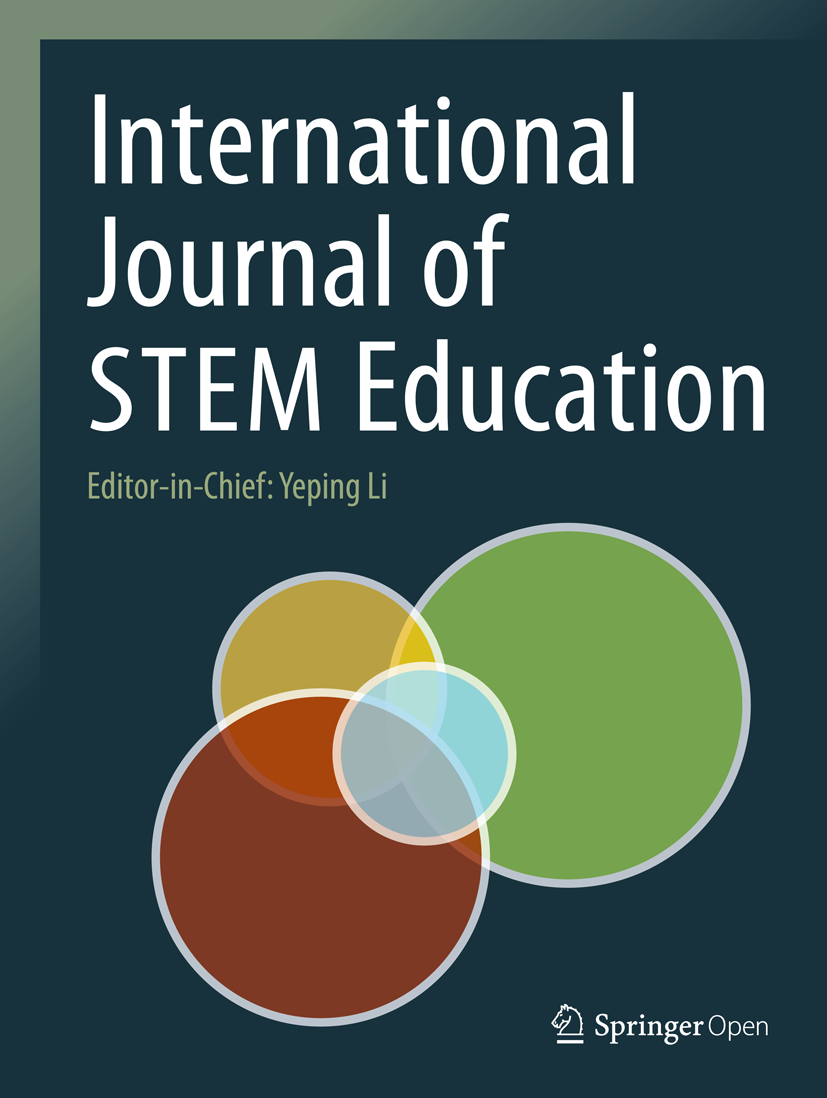Authentic STEM education through modelling: an international Delphi study
IF 8
1区 教育学
Q1 EDUCATION & EDUCATIONAL RESEARCH
引用次数: 0
Abstract
Abstract Background The literature asserts that science, technology, engineering, and mathematics (STEM) education needs to be authentic. Although models and modelling provide a basis from which to increase authenticity by bridging the STEM disciplines, the idea of authentic STEM education remains challenging to define. In response, the aim of this study is to identify consensus on significant elements of authentic STEM education through models and modelling. Views were gathered anonymously over three rounds of questions with an expert panel. Responses were subjected to a multimethod analysis that pursued identification, consensus, and stability in the panel’s revealed propositions and themes around authentic STEM education through modelling. Results The panel reached high consensus concerning the potential of STEM education to support learning across traditional subject borders through authentic problem solving. The panel also consented that modelling is indispensable for achieving real-world relevance in STEM education, and that model-based integrated STEM education approaches provide opportunities for authentic problem solving. Furthermore, results showed that integrating individual STEM subjects during teaching, in terms of including disciplinary knowledge and skills, requires specialised competence. Here, technology and engineering subjects tended to implicitly underpin communicated teaching activities aimed at STEM integration. Conclusions and implications The panellists stress that STEM disciplines should be taught collaboratively at the same time as they are not in favour of STEM as a subject of its own but rather as a cooperation that maintains the integrity of each individual subject. Many respondents mentioned integrated STEM projects that included modelling and engineering design, although they were not specifically labelled as engineering projects. Thus, real-world STEM education scenarios are often viewed as being primarily technology and engineering based. The panel responses also implicate a need for multiple definitions of authenticity for different educational levels because a great deal of uncertainty surrounding authenticity seems to originate from the concept implying different meanings for different STEM audiences. These international Delphi findings can potentially inform integrated STEM classroom interventions, teacher education development, educational resource and curriculum design.通过建模的真实STEM教育:一项国际德尔菲研究
摘要背景文献认为,科学、技术、工程和数学(STEM)教育需要是真实的。尽管模型和建模为通过连接STEM学科来提高真实性提供了基础,但真正的STEM教育的概念仍然具有挑战性。作为回应,本研究的目的是通过模型和建模,就真正的STEM教育的重要要素达成共识。专家小组通过三轮匿名提问收集了意见。对回答进行了多方法分析,通过建模,在小组揭示的围绕真实STEM教育的命题和主题中寻求识别、共识和稳定性。结果专家组就STEM教育的潜力达成了高度共识,即通过真正的问题解决来支持跨越传统学科边界的学习。专家组还一致认为,建模对于实现STEM教育与现实世界的相关性是不可或缺的,基于模型的综合STEM教育方法为真正解决问题提供了机会。此外,结果显示,在教学过程中整合各个STEM科目,包括学科知识和技能,需要专业能力。在这里,技术和工程学科倾向于隐含地支持旨在整合STEM的交流教学活动。小组成员强调,STEM学科应该同时进行协作教学,因为他们不赞成将STEM作为一个独立的学科,而是赞成将其作为一种合作,以保持每个单独学科的完整性。许多受访者提到了包括建模和工程设计在内的综合STEM项目,尽管它们没有特别标记为工程项目。因此,现实世界的STEM教育场景通常被视为主要基于技术和工程。小组的回答还暗示,需要针对不同的教育水平对真实性进行多重定义,因为围绕真实性的大量不确定性似乎源于对不同STEM受众意味着不同含义的概念。这些国际德尔菲研究结果可以为STEM课堂干预、教师教育发展、教育资源和课程设计提供潜在的信息。
本文章由计算机程序翻译,如有差异,请以英文原文为准。
求助全文
约1分钟内获得全文
求助全文
来源期刊

International Journal of Stem Education
Social Sciences-Education
CiteScore
12.40
自引率
11.90%
发文量
68
审稿时长
13 weeks
期刊介绍:
The International Journal of STEM Education is a multidisciplinary journal in subject-content education that focuses on the study of teaching and learning in science, technology, engineering, and mathematics (STEM). It is being established as a brand new, forward looking journal in the field of education. As a peer-reviewed journal, it is positioned to promote research and educational development in the rapidly evolving field of STEM education around the world.
 求助内容:
求助内容: 应助结果提醒方式:
应助结果提醒方式:


